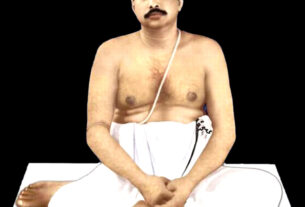The inclusion of Mahatma Gandhi’s picture on Indian currency notes was a significant decision that honored his pivotal role in India’s struggle for independence and his enduring legacy as a leader of the Indian freedom movement. The decision to feature Mahatma Gandhi’s image on currency notes was not just a symbolic gesture but also a reflection of his profound influence on the nation’s history and values. Here are the key facts behind this decision:
Historical Context: Mahatma Gandhi, born Mohandas Karamchand Gandhi, was a preeminent leader in India’s struggle for independence from British colonial rule. His philosophy of nonviolent resistance (Satyagraha) and civil disobedience inspired millions of Indians to join the movement for freedom and social justice.
Gandhi’s Significance: Gandhi’s leadership and philosophy were instrumental in uniting people across India’s diverse cultural, linguistic, and religious landscape. His commitment to truth, nonviolence, and social equality resonated deeply with the masses and played a crucial role in the movement’s success.
Transition to Independent India: When India gained independence from British rule in 1947, there was a need to establish new symbols and icons that reflected the country’s newfound sovereignty and identity. Mahatma Gandhi’s image emerged as a natural choice due to his iconic status and the central role he played in the struggle for independence.
Reserve Bank of India Act, 1934: The Reserve Bank of India (RBI) Act, 1934, provides the legal framework for the issuance and management of currency notes in India. Under this act, the central government has the authority to determine the design and features of Indian currency notes.
Inclusion of Gandhi’s Image: The decision to feature Mahatma Gandhi’s picture on Indian currency notes was taken by the Indian government in consultation with the Reserve Bank of India. His image appeared on the newly introduced series of currency notes, known as the Mahatma Gandhi Series, which was first issued in 1996.
Symbolic Significance: The inclusion of Gandhi’s image on currency notes symbolized the ideals of unity, freedom, and social justice that he stood for. It served as a constant reminder of India’s journey from colonial subjugation to self-rule and the values that underpinned that transformation.
Denominations: Over the years, various denominations of currency notes have featured Mahatma Gandhi’s portrait, including the commonly used notes of Rs. 10, Rs. 20, Rs. 50, Rs. 100, Rs. 200, Rs. 500, and Rs. 2000. Each note showcases an iconic image of Gandhi, usually accompanied by his signature round glasses and a spinning wheel (charkha), symbolizing his emphasis on self-reliance and rural empowerment.
Continuing Legacy: The practice of featuring Mahatma Gandhi’s image on currency notes continues to this day, reinforcing his enduring influence and legacy in India’s socio-political fabric.
Educational and Inspirational Value: The presence of Mahatma Gandhi’s image on currency notes also serves an educational purpose, introducing his legacy to newer generations and inspiring citizens to uphold the values of truth, nonviolence, and social harmony.
The decision to include Mahatma Gandhi’s picture on Indian currency notes was a tribute to his remarkable contributions to India’s struggle for freedom and his embodiment of values that continue to shape the nation’s ethos. His image on currency notes not only acknowledges his role as a leader but also serves as a constant reminder of the principles he espoused and the ideals for which he devoted his life.
Article Searchable Keywords:
Mahatma Gandhi on currency notes
Gandhi’s image on Indian money
Indian currency symbolism
Mahatma Gandhi’s legacy
Freedom movement leader
Indian currency history
Mahatma Gandhi Series notes
Gandhi’s impact on currency
Values on currency notes
Gandhi’s role in independence
Symbolic currency design
Indian rupee denominations
Currency note significance
Gandhi’s portrait symbolism
Historical currency design
Gandhi’s charkha on notes
Indian currency commemoration
Gandhi’s influence on society
Currency note educational value
Gandhi’s round glasses on notes
Article queries
Mahatma Gandhi on Indian Currency: Honoring Freedom and Values
Gandhi’s Image on Indian Currency: Symbol of Independence and Ideals
The Legacy of Gandhi on Indian Currency: Freedom’s Enduring Emblem
Mahatma Gandhi Series: A Tribute to Leadership on Indian Currency
Gandhi’s Portrait on Indian Currency: Iconic Symbol of Nation’s Struggle
Gandhi’s Image on Rupee Notes: Echoes of Freedom and Unity
The Significance of Gandhi’s Picture on Indian Currency Notes
Mahatma Gandhi’s Face on Currency: Capturing India’s History
Gandhi’s Influence on Indian Currency: Reminders of Values and Legacy
Mahatma Gandhi’s Legacy: Portrayal on Indian Currency Notes
Mahatma Gandhi’s Iconic Image: Inspiring Generations on Currency Notes
Gandhi’s Vision and Values: Reflections on Indian Currency
bhalakatha
prayas
mind plugin
#bhalakatha #prayas #MindPlugin





